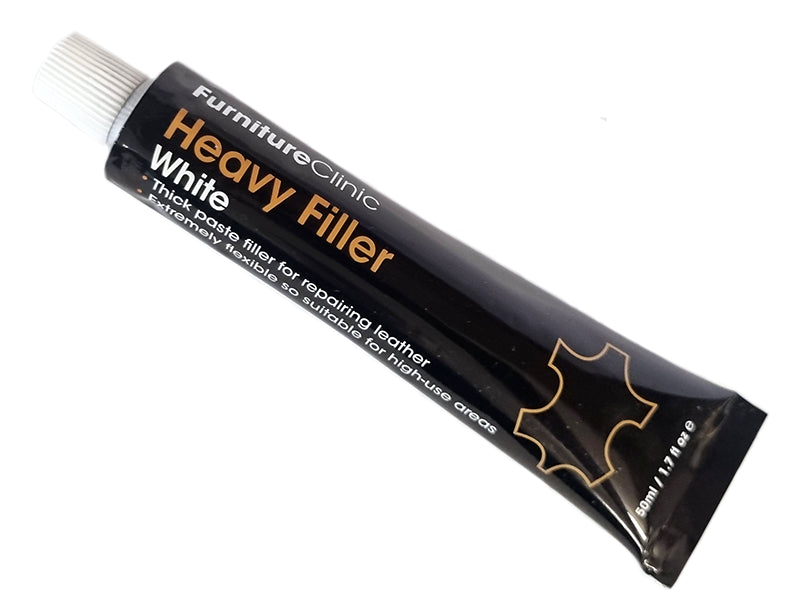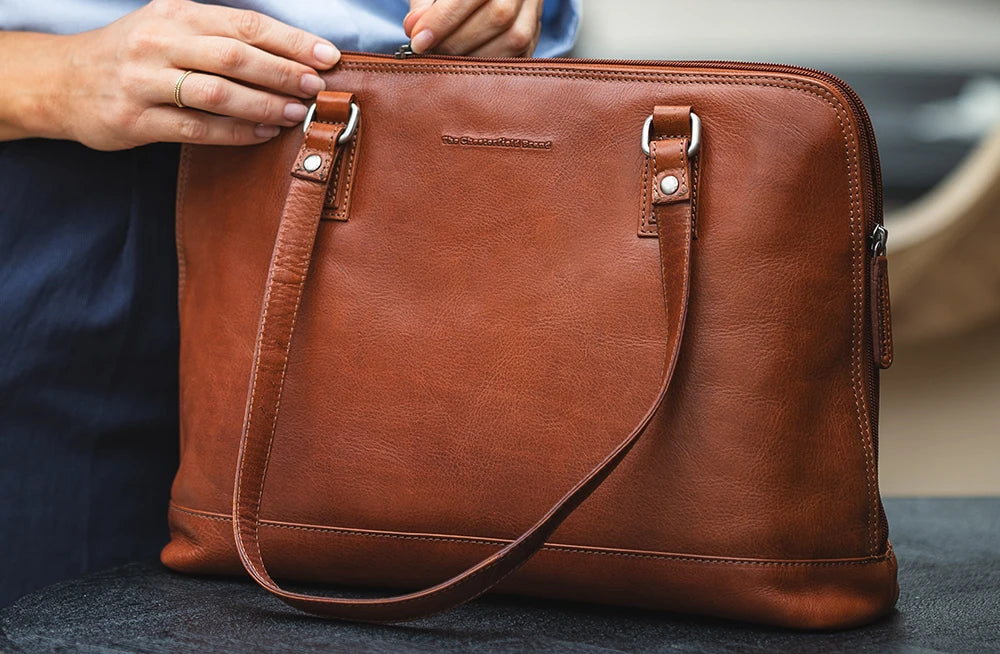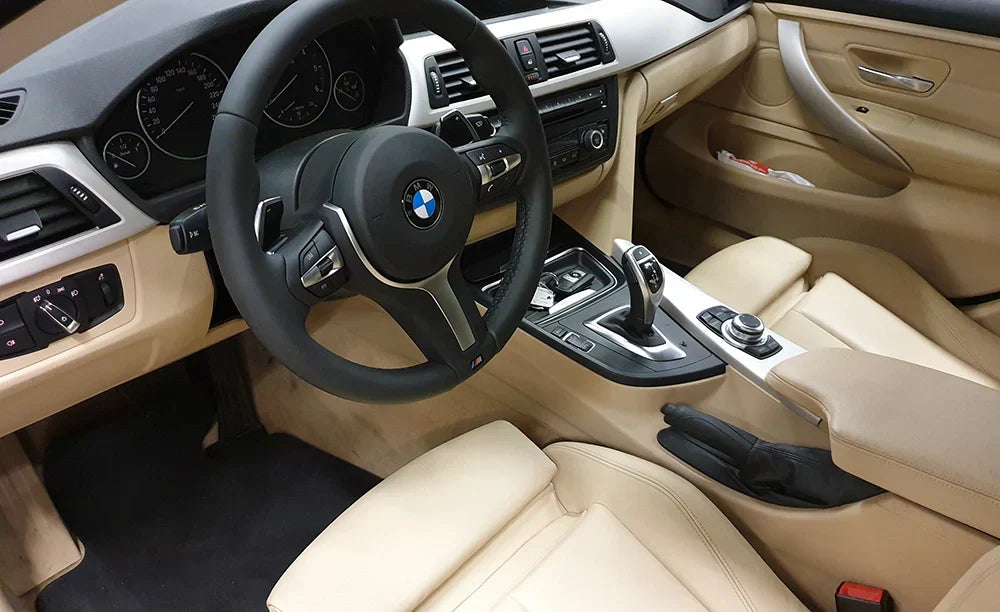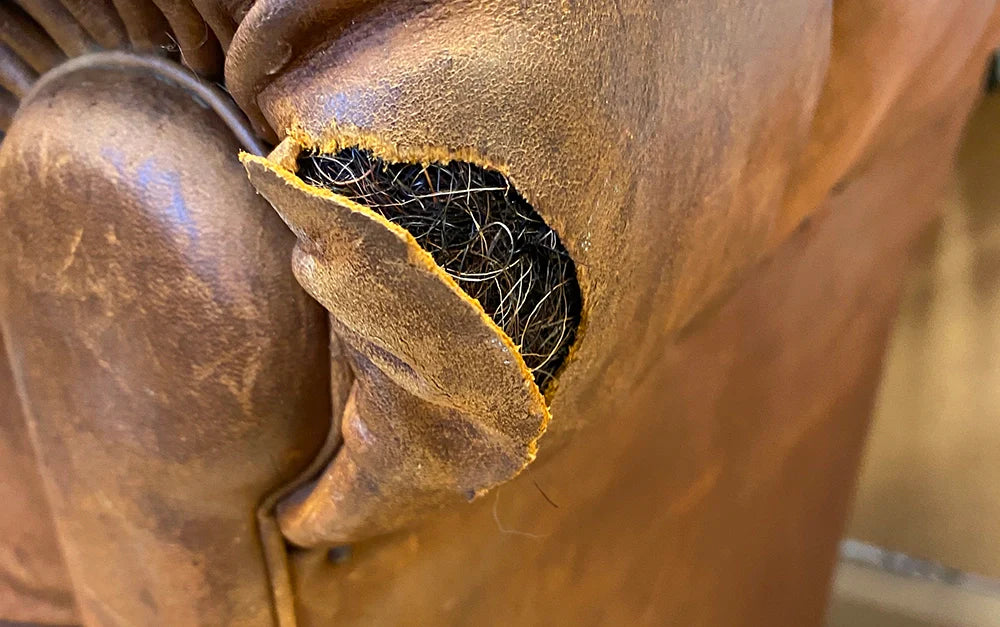Here we go through step-by-step how to go about touching up the color, or completely repainting a worn leather steering wheel. The steering wheel we are going to repaint below is in a Maserati that has done about 10,000 miles and is very worn. We will repaint the entire steering wheel, i.e. the parts of the steering wheel that are made of leather. We will not repaint the steering wheel console itself, the keypad and the airbag in the center (which is also damaged and needs to be replaced in this car).
Step 1 - Preparation: If the steering wheel, as in our example, is very worn, so much so that the surface layer has been worn away and there has been an "edge" between the surface layer and the worn away surface, we start by carefully sanding down all the unevenness with a fine sandpaper. In this case, we first use fineness grade 400 and then 1200.
Step 2 - Cleaning: The steering wheel is cleaned thoroughly, first with Ultra Clean Leather Cleaner and then Alcohol Cleaner . The latter removes old grease and wax and is important for removing all grease and other things from hands that have held the steering wheel over the years. This is a very important step, because the paint does not adhere well to dirt, grease and the like. As you can see, the steering wheel is really dirty. Since it is black, not all the deposits are visible, but they are guaranteed to be there and must be removed before applying the leather paint.
Step 3 - Masking: Since the steering wheel in our case is mounted in the car and we choose not to remove the airbag, we will do a thorough masking first. Then we will cover the dashboard and center console, for example with an old sheet. We will use a airbrush and we want to make sure that no leather dye gets in places other than where we want it. Actually, you should also mask the windshield, but here you have to make a trade-off, as light is also necessary. We choose not to mask the windshield, we wipe it off properly immediately after dyeing instead.
Step 4 - Staining: Now it's time to apply leather paint to the steering wheel. To increase adhesion and durability, we first apply a couple of coats of a primer, Adhesion Promoter. You can choose to apply primer, leather dye and leather finish with sponge , but since we have an airbrush we use this. NOTE! If you use a sponge, it is especially important to let it dry between each coat, as the paint and/or finish can peel off the surface when you apply the next coat if it is not completely dry. Once the primer has dried, we apply leather color Black HC in three layers with an airbrush. We use a hair dryer to speed up the drying process between each layer. Then we apply an equal number of layers of Leather Finish . We choose the Satin gloss, which gives a nice leather feel. We add hardener Cross Linker Eco in the finish, thus further increasing the wear resistance. This is necessary because a steering wheel is exposed to a lot of wear from sweaty and dirty hands, which are sometimes also adorned with sharp rings.
After the first coat of finish has dried, sit down and feel the surface of the steering wheel with your hands to see if you can find any irregularities, such as dust particles or other things. This can be very annoying if not removed, the steering wheel should be even and smooth. Use a fine sandpaper (e.g. 1000 grit) to gently sand down any imperfections. Then apply a couple more coats of finish.
Now the steering wheel is finished! Carefully remove the masking and don't forget to wipe the windshield. Let it dry for a few hours, preferably overnight, before using the car. After a couple of days, we recommend applying a protective cream on the steering wheel, it protects against both dirt and wear.











